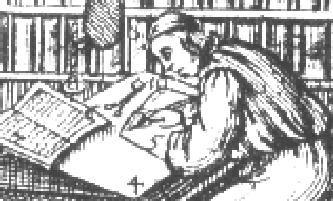 |
Text Encoding Initiative |
5. Page and Line Numbers |
Page and line breaks may be marked with the following empty elements.
- <pb>
- marks the boundary between one page of a text and the next in a standard reference system.
- <lb>
- marks the start of a new (typographic) line in some edition or version of a text.
These elements mark a single point in the text, not a span of text. The global n attribute should be used to supply the number of the page or line beginning at the tag. In addition, these two elements share the following attribute:
- ed
- indicates the edition or version in which the page break is located at this point.
When working from a paginated original, it is often useful to record its pagination, if only to simplify later proof-reading. Recording the line breaks may be useful for the same reason; treatment of end-of-line hyphenation in printed source texts will require some consideration.
If pagination, etc., are marked for more than one edition, specify the edition in question using the ed attribute, and supply as many tags are necessary. For example, in the following passage we indicate where the page breaks occur in two different editions (ED1 and ED2)
<p>I wrote to Moor House and to Cambridge immediately, to say what I had done: fully explaining also why I had thus acted. Diana and <pb ed="ED1" n="475"/> Mary approved the step unreservedly. Diana announced that she would <pb ed="ED2" n="485"/>just give me time to get over the honeymoon, and then she would come and see me.</p>
The <pb> and <lb> elements are special cases of the general class of milestone elements which mark reference points within a text. TEI Lite also includes a generic <milestone> element, which is not restricted to special cases but can mark any kind of reference point: for example, a column break, the start of a new kind of section not otherwise tagged, etc. This element has the following description and attributes:
- <milestone>
- marks the boundary between sections of a text, as indicated by
changes in a standard reference system. Attributes include:
- ed
- indicates the edition or version to which the milestone applies.
- unit
- indicates what kind of section is changing at this milestone.
The names used for types of unit and for editions referred to by the ed and unit attributes may be chosen freely, but should be documented in the header.
The <milestone> element may be used to replace the others, or the others may be used as a set; they should not be mixed arbitrarily.
Up: Contents Previous: 4. Encoding the Body Next: 6. Marking Highlighted Phrases
Date: (revised October 2004) Author: Lou Burnard (revised SPQR).
Copyright TEI 1995